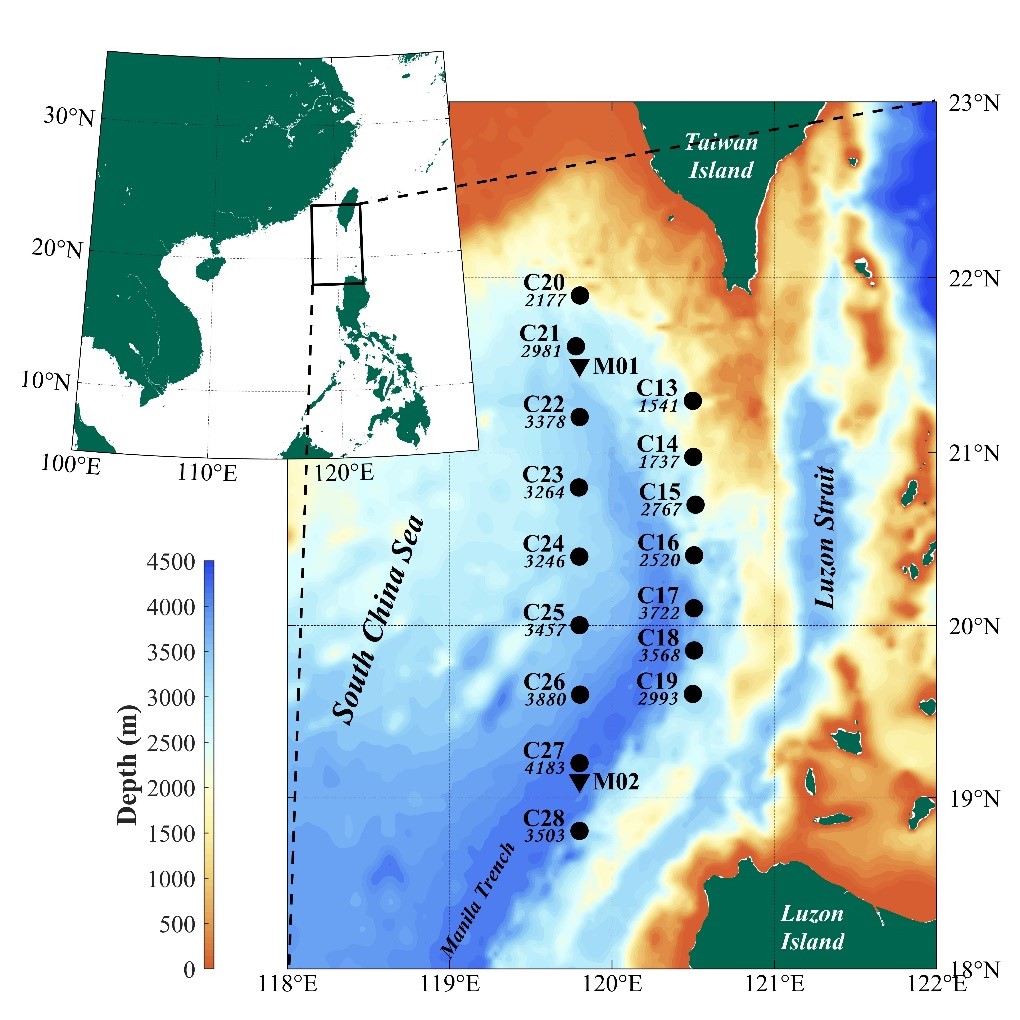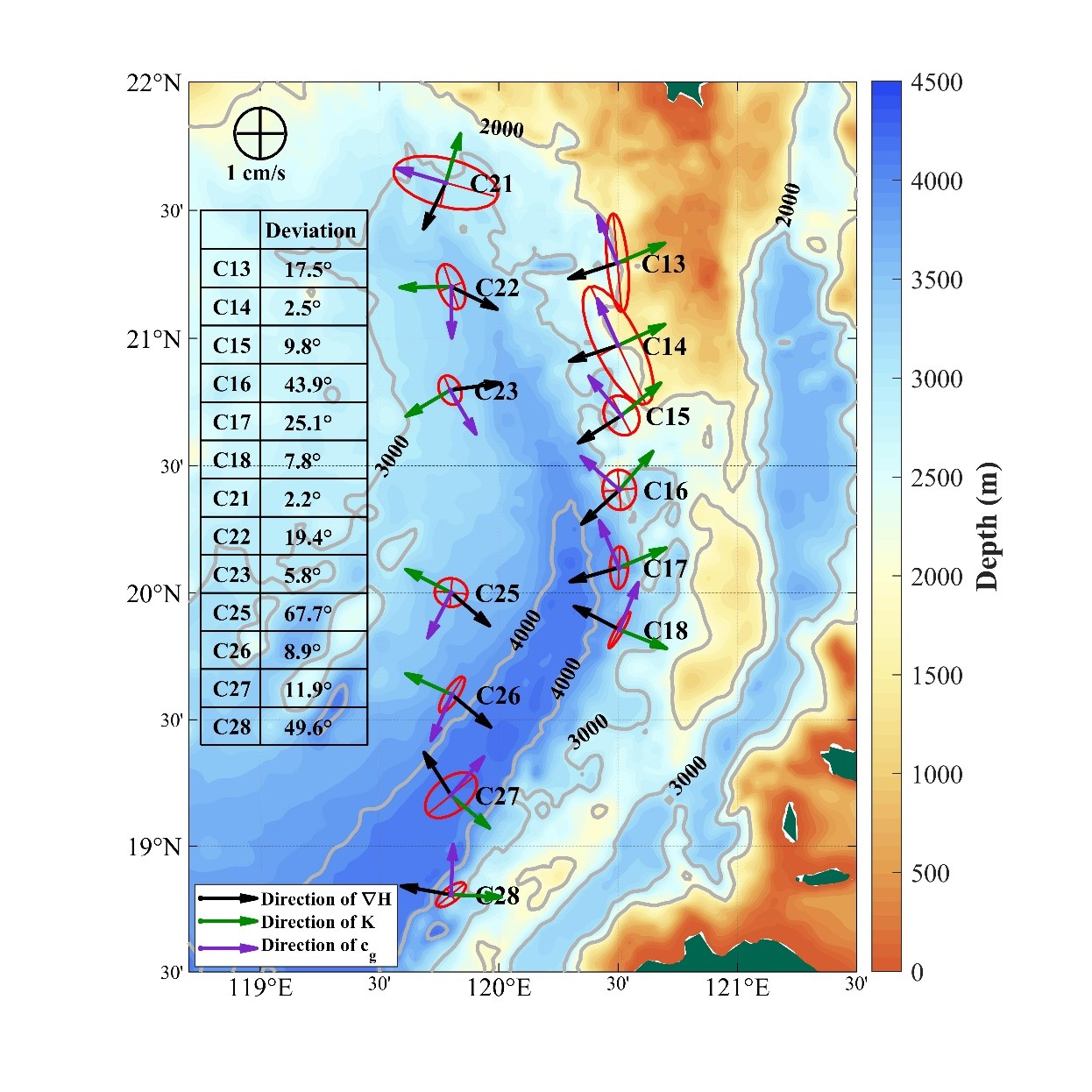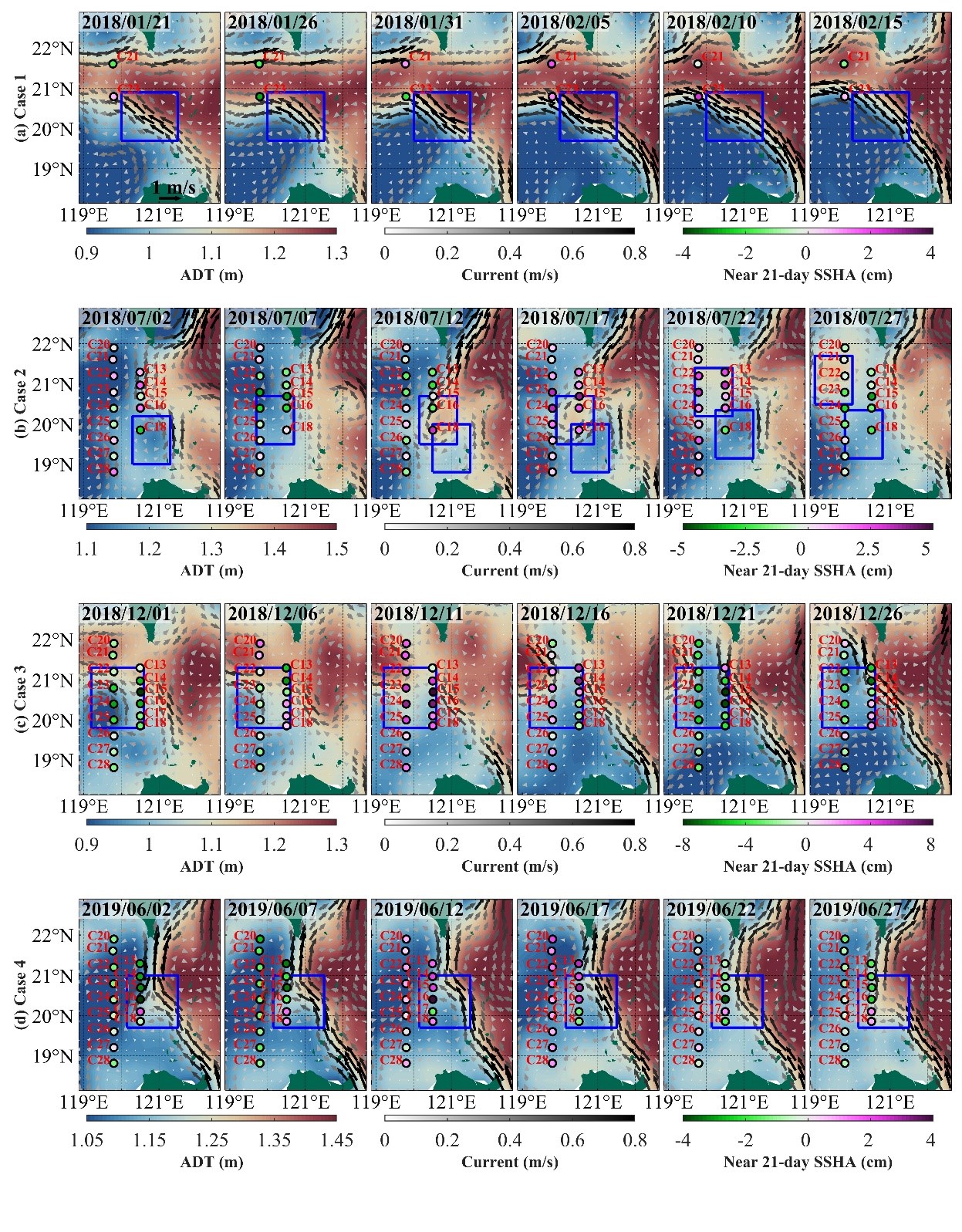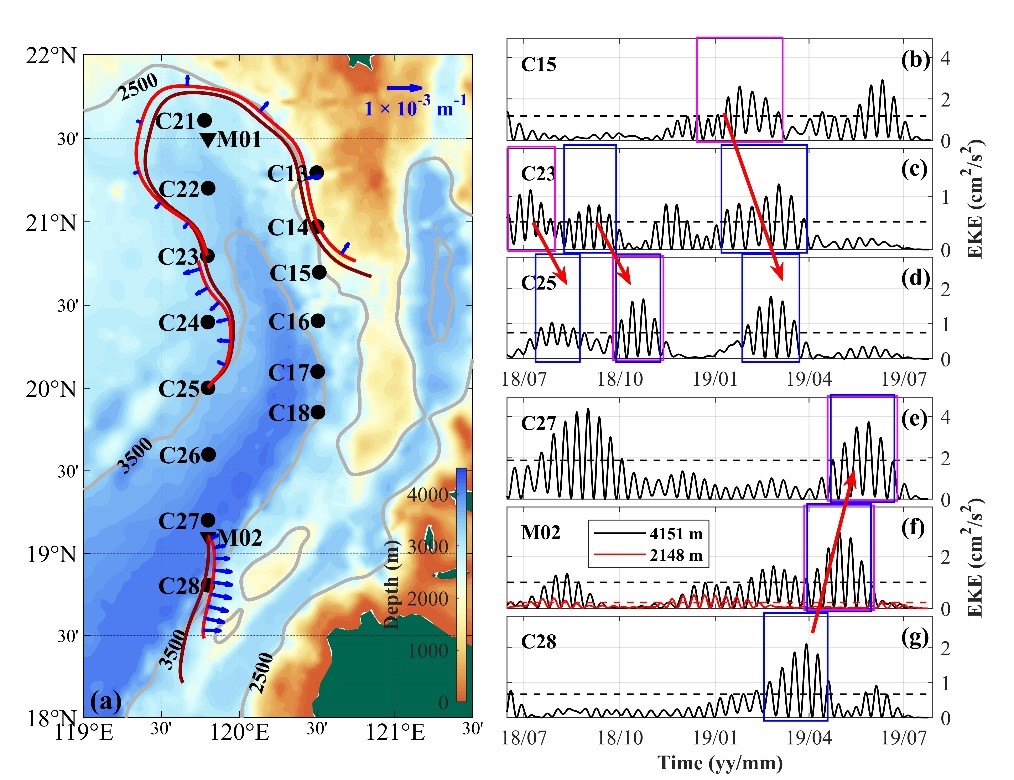

Recently, Hua Zheng, a doctoral student of School of Oceanography, Shanghai Jiao Tong University (SJTU-SOO), published a research paper titled “Observation of Bottom-Trapped Topographic Rossby Waves to the West of the Luzon Strait, South China Sea” in Journal of Physical Oceanography as the first author. The paper was completed by the group of Xiao-Hua Zhu at SJTU-SOO/Second Institute of Oceanography, MNR and the group of Fei Yu at Institute of Oceanology, Chinese Academy of Sciences. Professor Xiao-Hua Zhu is the corresponding author of the paper.
Supported by the Global Climate Changes and Air-sea Interaction Program, the largest CPIES (Current-Pressure equipped Inverted Echo Sounder) array in China was deployed around the Luzon Strait for over 400 days, which greatly enriched the oceanic observations and significantly contributed to the study of multiscale dynamic processes in this region. After illustrating the abyssal current and its seasonal variation west of the Luzon Strait in their previous work (https://doi.org/10.1175/JPO-D-21-0284.1), this paper further pointed out that near 21-day intraseasonal variabilities existed in the deep Manila Trench (Fig. 1) were the dynamic responses of the abyssal current to the Kuroshio intrusion and its related variabilities.

Fig. 1. Map of the study region in the South China Sea. CPIES sites and mooring sites are indicated by black dots and black triangles, respectively.
Bottom-trapped near 21-day variabilities observed by CPIESs and moorings in the northern Manila Trench followed the characteristics of topographic Rossby waves (TRWs) (Fig. 2). Upper perturbations in winter and summer induced TRWs on sloping topographies through potential vorticity adjustment, which further contributed to intraseasonal variabilities in the abyssal circulation. Kuroshio intrusion and its related variabilities contributed to the perturbations in winter, whereas the perturbations generated north of Luzon Island dominated in summer (Fig. 3). The variations in the Kuroshio path and the Kuroshio-related eddies induced TRWs in regions with steep topography. However, the spatiotemporal distributions of TRWs were complex owing to the propagation of the waves. Some cases of TRWs showed no relation to the local upper-layer perturbations but propagated from adjacent regions (Fig. 4).

Fig. 2. Standard deviation ellipses of the near-21-day variance from CPIES observations. Directions of downslope, group velocity, and wavenumber vectors are indicated. Deviation of group velocity direction and ellipse major axes are listed. The small deviations at most sites indicate that the variance follows the characteristic of TRWs.

Fig. 3. Daily maps of upper perturbations in winter 2017, in summer 2018, in winter 2018, and in summer 2019. ADT (color) and surface geostrophic currents (arrows) are shown. 18–28-day band-pass-filtered SSH anomaly is indicated by colored dots.

Fig. 4. (a) Wave rays (red and dark red lines) and wavenumber vectors (blue arrows) from ray-tracing model. Red and dark red lines are rays without and with consideration of background currents. (b–g) Time-series of 18–28-day band-pass-filtered EKE at CPIES and mooring sites. Red arrows indicate propagation of TRWs.
This study describes the generation, propagation, and spatiotemporal distribution of near 21-day TRWs in the northern South China Sea, and confirms that the Kuroshio and Kuroshio-related eddies play important roles in the dynamic processes associated with intraseasonal variabilities in the deep South China Sea through the generation of TRWs. The study may therefore contribute to our knowledge of the dynamic responses of the abyssal current to mesoscale perturbations in the upper ocean.
Link to the paper:
https://doi.org/10.1175/JPO-D-22-0065.1





